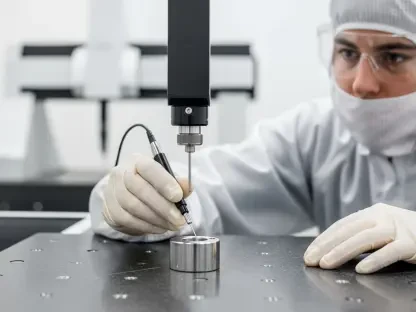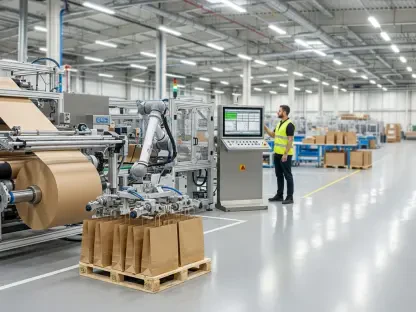What happens when cutting-edge technology, once reserved for industrial giants with deep pockets, becomes accessible to startups, university labs, and independent designers, potentially transforming the landscape of metal and ceramic manufacturing? The introduction of a new player in additive manufacturing (AM)—a compact machine that promises to deliver industrial-grade precision without the staggering costs or sprawling factory requirements—could redefine how intricate components for medical devices, luxury jewelry, and advanced research are created, sparking curiosity about whether smaller players can now compete on a global stage.
The significance of this development lies in its potential to democratize advanced manufacturing. For too long, the high barriers of cost and complexity have sidelined small-to-medium enterprises (SMEs) and niche innovators from leveraging metal and ceramic 3D printing. With industries increasingly demanding customized, high-precision parts, the arrival of an affordable, compact AM solution addresses a critical gap. This story isn’t just about a new machine; it’s about opening doors for those who drive innovation but lack the resources of large corporations, potentially reshaping the future of production.
Why Compact AM Is a Game-Changer Today
Breaking down the walls of exclusivity, compact AM machines target a broader audience with their promise of accessibility. Unlike traditional industrial systems that demand millions in investment and vast operational space, these smaller units are designed for environments as diverse as university research labs and boutique design studios. Their arrival signals a shift toward inclusivity in a field long dominated by big players, offering a chance for fresh ideas to emerge from unexpected corners of the market.
This trend reflects a growing need for flexibility in manufacturing. As sectors like healthcare and luxury goods push for unique, tailor-made solutions, the ability to produce complex metal and ceramic parts without prohibitive costs becomes invaluable. Compact AM technology stands poised to empower smaller entities, enabling them to prototype and produce with the same precision as their larger counterparts, thus leveling a historically uneven playing field.
The implications extend beyond mere access to tools. By lowering financial and logistical hurdles, these machines could accelerate innovation cycles, allowing startups to test groundbreaking concepts or designers to craft one-of-a-kind pieces without breaking the bank. This democratization might just be the catalyst needed to spark a wave of creativity and competition across industries.
Accessibility: The New Frontier in Additive Manufacturing
Historically, metal and ceramic 3D printing has been out of reach for many due to its high operational complexity and steep price tags. Large industrial setups often require specialized staff and significant infrastructure, creating a barrier that excludes smaller innovators from participating in cutting-edge production. This exclusivity has stifled potential advancements that could arise from diverse perspectives and agile experimentation.
Now, the push toward accessibility is gaining momentum as a defining trend in AM. The industry recognizes that innovation often stems from smaller organizations—think university labs developing novel materials or startups crafting next-gen medical devices. By introducing compact solutions that reduce both cost and complexity, manufacturers are addressing an urgent need to include these voices, fostering an environment where groundbreaking ideas can flourish without the burden of overwhelming investment.
This shift also aligns with broader market demands for customization and speed. As consumer expectations evolve, the ability to produce small batches of highly specialized components becomes a competitive edge. Compact AM machines are stepping in to meet this demand, offering a pathway for SMEs and niche creators to contribute to industries that thrive on precision and individuality, ultimately enriching the manufacturing ecosystem.
Inside the Technology: Features and Sector-Wide Impact
At the heart of this transformation is a machine like the Carmel Pro, engineered to deliver high-end capabilities in a compact form. With a 60-70% reduction in initial investment compared to larger industrial models, alongside a smaller footprint, it fits seamlessly into budget-conscious and space-limited settings. This cost and space efficiency makes it an attractive option for organizations that previously couldn’t justify the expense of advanced AM systems.
Material versatility sets this technology apart, supporting multiple material channels and a wide range of metal and ceramic inks, including precious metals. Such flexibility enables applications spanning from intricate jewelry designs to innovative medical components like custom prosthetics. Additionally, sustainability features, such as full ink recirculation to minimize waste and rapid job turnarounds of under 20 minutes, enhance its appeal for eco-conscious production, aligning with modern manufacturing priorities.
The impact ripples across diverse sectors, offering tangible benefits. For instance, a startup focusing on medical device innovation can now prototype complex parts without outsourcing to expensive facilities, while a jewelry designer can experiment with unique precious metal designs in-house. This adaptability positions compact AM as a catalyst for cross-industry progress, empowering users to push boundaries in design and functionality without the traditional constraints of scale or cost.
Industry Perspectives: Vision and Validation
Leadership in the AM space articulates a clear mission behind this technological shift. Guy Zimmerman, CEO of XJet, emphasizes the transformative intent: “The goal is to empower a new wave of creators—startups, researchers, and designers—who’ve been locked out of advanced AM due to cost and complexity.” This vision underscores a commitment to breaking down barriers, ensuring that innovation isn’t confined to well-funded corporations but extends to agile, smaller players with bold ideas.
Industry experts echo this sentiment, noting a rising demand for user-friendly and cost-effective AM tools. Feedback from early adopters reinforces the potential, with reports of university labs successfully testing novel ceramic composites using compact systems. These real-world examples validate the technology’s role in bridging the gap between theoretical research and practical application, highlighting its capacity to turn concepts into reality.
Such endorsements build confidence in the broader implications of compact AM. As more organizations adopt these solutions, the ripple effect could redefine competitive dynamics, allowing smaller entities to challenge established players. This alignment of vision and validation paints a picture of an industry ready to embrace inclusivity, with compact machines serving as the key to unlocking untapped potential across various fields.
Practical Integration: Steps to Adopt Compact AM Solutions
For organizations considering the adoption of compact AM technology, a strategic approach ensures seamless integration. Begin by assessing specific project needs, determining whether multi-material capabilities or high-precision outputs are critical for goals like rapid prototyping or small-batch production. This initial evaluation helps align the technology with intended outcomes, maximizing its value from the outset.
Leveraging built-in automation features can significantly ease the transition. Tools such as single-button job initiation, guided setup wizards, and self-monitoring systems reduce the learning curve, making the technology accessible even to non-expert staff. By minimizing training time and operational errors, these features allow teams to focus on innovation rather than troubleshooting, enhancing overall efficiency.
Finally, optimizing workflow and starting with pilot projects pave the way for sustainable growth. Capitalize on quick job turnarounds by streamlining material preparation and post-processing, ensuring productivity remains high. Testing the technology through limited runs—perhaps a small series of custom medical components or unique jewelry pieces—offers insights into capabilities before scaling up, allowing organizations to build confidence and refine processes without overextending resources.
Looking back, the journey of compact AM machines like the Carmel Pro marked a pivotal moment in manufacturing history. Their introduction challenged the status quo, proving that industrial-grade precision could be accessible to smaller players. As industries reflected on this shift, the focus turned toward actionable next steps: expanding material capabilities, fostering collaborations between SMEs and research institutions, and investing in training programs to build expertise. The future hinged on continuous innovation, with the promise of even more inclusive tools driving progress. This era underscored a powerful truth—empowering diverse creators wasn’t just a trend but a foundation for sustainable, transformative growth in metal and ceramic production.









